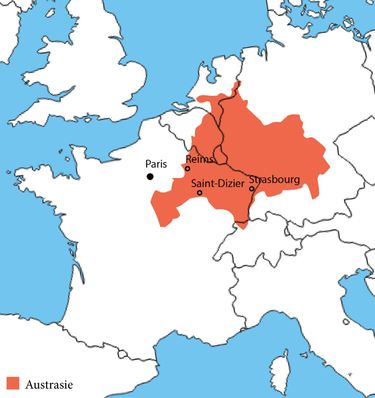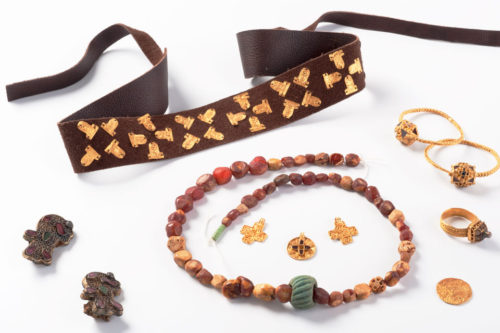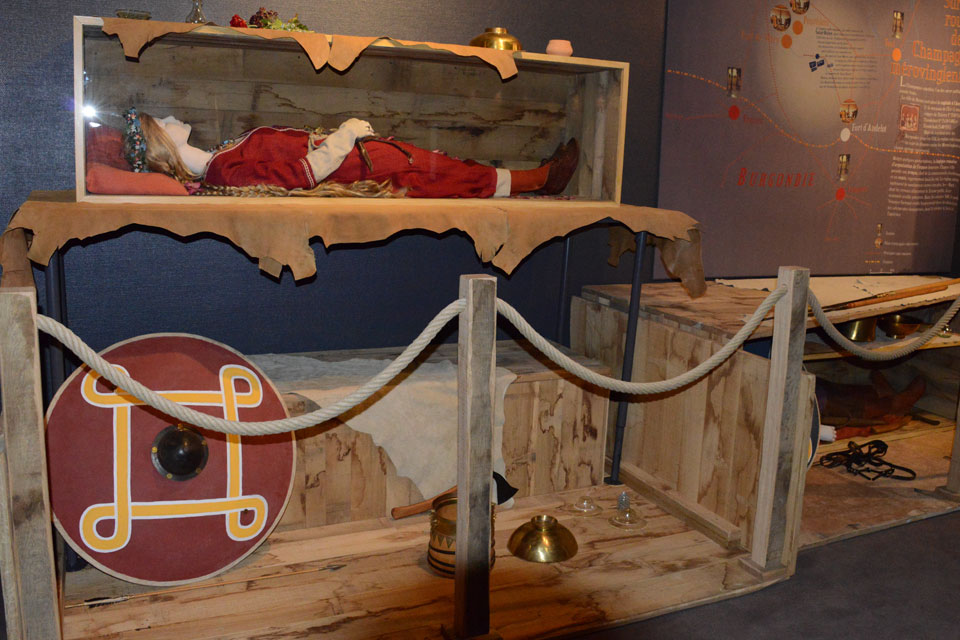While in Paris to see the exhibition on Merovingian Times, remember to make a detour to Saint-Dizier to see the exhibition on Austrasia and the Eastern Frankish Kingdom

Saint-Dizier lies no more than 200 km west of Paris to the south of Reims. A small and relatively insignificant town, Saint-Dizier nevertheless deserves a visit from anyone even mildly interested in the history of the Early Middle Ages. Here excavations have uncovered some very rich furnished graves, but also abundant evidence about the settlement and the people who lived there in mid 6th century. This winter (2016-17), it is especially exciting to make the detour as the city hosts a remarkable exhibition on the Early Middle Ages in Eastern Francia. To understand the context, though, it is necessary providing a bit of background.
When Clovis died in AD 511, his four sons inherited his realm, which was promptly divided into four parts. While Clotaire inherited the old core of the Frankish kingdom around Tournai, Clodomir got the region reaching from Paris to the Atlantic, Childebert received Normandy, and Theuderic held the north-eastern part from Thuringia to Reims. After Theuderic died in 534, his throne, curiously enough, passed unhindered to his son Theudebert, whose son, Theudebald, peacefully took over in AD 548. However, at his death in 555, the throne passed to his granduncle Clotaire, which meant the first end of Austrasia. However, a few years later, the sons of Clotaire were obliged to divide their inheritance, and Sigebert ended up with the eastern part, now – for the first time – called Austrasia. Merovingian history is often told as a series of royal partitions among the heirs of a dead king followed by contractions; however, in the end, after c. 600, the Merovingian kingdom was ruled from the eastern part, Austrasia. In a later phase, Carolingians once again united Neustria and Austrasia.
It has been claimed that the Carolingians were not so much the heirs of the Merovingian dynasty but the heirs to the Austrasian throne. However, this is not how the history has usually been told. Quite the opposite was the case, the challenge being that Austrasia arguably bridged the Ardennes, Alsace, Lorraine and far into the region around the Middle Rhine towards the Middle Elbe. Throughout history, Austrasia was a contested, lively region covering land along the river Rhine, thus constituting a border zone between the emerging nations, France and Germany, from the 9th to the 20th century. Accordingly, when French historians later wrote about the Merovingians, they conveniently characterised Austrasia as the periphery and Neustria with Paris as its centre.

This French perspective makes it possible to mount an exhibition with the French title: Austrasie – le Royaume mérovingien oublie. The rest of us, however, will know better. Rather, the old Roman Limes was the ancient core of the region conquered by Clovis and later reigned over by Charlemagne from Aachen. We are, in fact, in the heartland of the Merovingians.
All this makes the present exhibition even more interesting as the Museum at Saint-Dizier has succeeded in bridging its own excellent collection with spectacular loans from collections in Germany. The showpiece may indeed be the grave of the little prince found beneath the floor of the Cathedral in Cologne. But this is complemented by other exciting finds, like, for instance, the jewels, which belonged to the so-called Lady of Grez-Doceau, and more local finds, which belonged to the princely graves excavated in the centre of Saint-Dizier. What makes this exhibition especially interesting are the results from excavations of settlements – not least the local site at Crassées.
While the exhibition in Paris this autumn focuses on art, the exhibition at Saint-Dizier focuses on daily life in the Merovingian world.
Both should be visited!
VISIT:
Austrasie. Le royaume Mérovingien oublie
Espace Camille Claudel
9, avenue de la République
52100 Saint-Dizier
CATALOGUE:
Austrasie. Le royaume mérovingien oublie.
Ed. by Virginie Dupuy
Silvana Editoriale 2016
READ ALSO:

